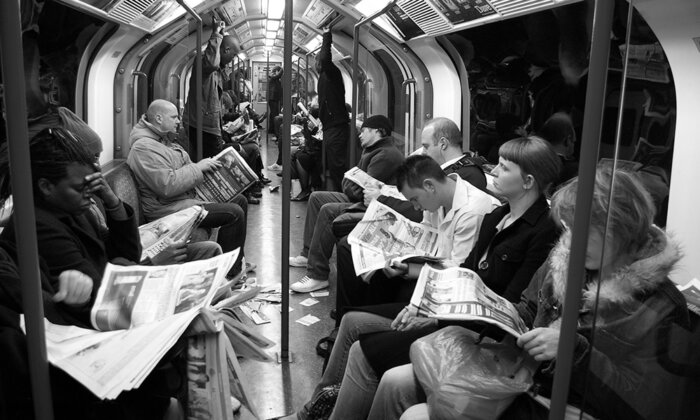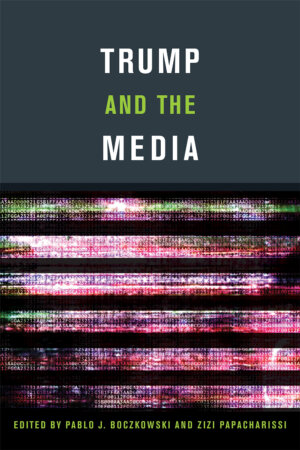The Importance of Being a Headline

Imagine, if you will, a news story without a headline. Picture yourself reading that story. The topic of the story becomes unclear. Its focus is vague. Context is absent. You are reading a news report of some form, but you are not reading a news story. Headlines introduce, frame, and contextualize. They award significance, communicate gravitas, and reinforce status. Headlines inform and misinform. They are a crucial part of how news turns into a story. In the long term, they play a part in how stories are retold and recorded, thus eventually turning into memories and histories.
How Headlines Read
The presentation of headlines may have changed over time, but the form remains the same. The language is meant to be short, summative, and sharp. The words bring the crucial elements of the story to the forefront, and the grammar and syntax drum up intensity, if needed. The verbal economy of headlines is tight and it must work quickly and efficiently. It is meant to capture the attention of the reader without, ideally, compromising the essence of the story. Because headlines not only lure, they also direct the attention of the reader. And in doing so, they frame a story. They offer a lens through which to understand it. They kick start the cognitive process. They frame the issue at hand, by selecting, as media scholar Robert Entman famously wrote, “some aspects of a perceived reality [to] make them more salient in a communicating text.” Framing is guided by news values that prioritize recency, urgency, and proximity; the economy and political affairs; and privileged nations and dominant ideologies while also appealing to viewers by being commonsensical, entertaining, and dramatic. News values are about turning events into stories, and headlines present the first step in doing so.

Newer technologies do not radically reorganize how headlines are framed, and which news values guide the framing process. But they do amplify visibility and pluralize access. Therefore, a directional lens offered through a frame becomes more visible, by reaching greater audiences more quickly. And in following suit with the ascent of the 24/7 news cycle that TV ushered in, new media platforms reinforce and reproduce an obsession with instantaneity in news reporting. Headlines must always be current. Headlines can now be revised without waiting for the next day’s edition, so they are. Because they can be revised, they are constantly revised, lest the attention of readers drifts off. And so, we live in a news ecology of the ever-changing, always-updateable news beat; headlines are always already new, to borrow a phrase from media historian Lisa Gitelman.
Technology is not neutral; it augments exposure. But it also does not discern between truth and fiction.
As a result, headlines become clickbait for a broad variety of news organizations, used to attract eyeballs. In some ways, headlines have always been used as clickbait and the news ecology has always been driven by the economics of attention. These phenomena are not new; the words we use to describe them with have changed. Hashtags become headlines, and tweets are reported as both the headline and the story. Headlines are algorithmically generated and propagated by bots, leading to news, actual or fake. Importantly, newer platforms afford anyone the opportunity to craft a headline, and subsequently a news story. While this pluralizes the news ecology, it does not necessarily democratize the process. Actors, engaging in independent or coordinated acts of journalism, have a say in what story is told, and how it is introduced to the public arena. We might understand this process as a form of networked framing and gatekeeping, where a variety of actors work together or on their own, to crowdsource news content to prominence, via the use of conversational, social, and digitally enabled practices that symbiotically connect elite and crowd in framing what is relevant. This means that headlines about civil rights issues gain greater attention (#blacklivesmatter) at the same time that fake stories are elevated to prominence (#pizzagate). Technology is not neutral; it augments exposure. But it also does not discern between truth and fiction. Citizens, journalists, and politicians can.
How Headlines Feel
Headlines are part of the magical allure of news reading. In the early days of newspapers, newsboys yelped them out to attract passersby. When newspapers were not affordable or accessible to all, headlines would form the basis for conversation as people gathered and read them in cafés. From the food trucks of New York City that displayed above fold amongst coffees and hot dogs to the kiosks of Europe and South America enclosed by newspapers attached to wire with clothespins, people would gather around, peruse the day’s headlines and engage in casual social conversation with one another. There is a cognitive element to how we process the news, and framing addresses how the cognitive process is engaged. But there is a soft drama to the process of reading the news, which is always engulfed in our everyday routine, whether that involves in reading the newspaper in print form or browsing through a news site on one’s phone on the train to work. There is emotion involved in how we approach and become entranced by the process of following the news; this is both a social and information seeking process. And it is a process called into being via headlines. The affect of headlines, that is, the mood, the atmosphere, the feelings headlines evoke both draws us in and further moves us emotionally.
How do newer platforms reorganize the news experience? They fold into and further extend the effect of the 24-hour news cycle, and thus further cultivate and reproduce a fixation with instantaneity in news reporting. There are multiple ways in which digital and networked platforms of news storytelling amplify the prevalence of headlines and I have referred to some in the previous section. Here I want to focus on how technology lends texture to our affective reaction to news. One key term in doing so is premediation. Premediation describes the form events take on before they turn into stories. Premediation is thus connected to processes of events in the making, to anticipating what the news is going to be like, to how the headline is going to read. In his book “Premediation: Affect and Mediality After 9/11,” new media scholar Richard Grusin makes the point that premediation has dominated news storytelling post 9/11, a time when many of us, including news organizations, were struggling to make sense of what happened. He points to the news scroller, which became a staple of news storytelling during that time, as an example of this anticipation of the new, conveyed through the anxiety of constantly updating headlines. The form of the news scroller has dictated the stylistic and visual presentation of news online. It is a form that induces anticipation, and with that, anxiety; a state of always expecting the new.
There is emotion involved in how we approach and become entranced by the process of following the news; this is both a social and information seeking process.
Elsewhere, I have described this form of news storytelling as affective news. It is not a form of news storytelling that invites cool reflection, thoughtful fact-checking, and in general, slow news. Affective news is native to ambient, always-on architectures that utilize a variety of social media, including Twitter, Facebook, and Reddit in particular. It blends news, fact, drama, and opinion into one, to the point where discerning one from the other is impossible, and doing so misses the point. Affective reactions are not news, nor are they headlines. They stem out of social experiences of reading the news and are a way for readers to feel their way into the story, to paraphrase journalist and media scholar Sue Robinson. Problems arise when affect, or an affective reaction, become the story. And so instead of news, we get mere headlines, repeated to the rhythm of the news scroller, our social media feeds, constant news updates, and always breaking news. When headlines are repeated affectively, with no follow-up story or context, then we hear a lot about Secretary Clinton’s emails without ever finding out exactly what happened. We constantly receive news alerts about President Trump not making his tax returns available, but we are spared the specifics of how this is possible. We become alarmed about #brexit, but we never manage to learn about the complexities that led to that particular development. In other words, we get intensity, 24/7, but no substance.
How Headlines Pay
The economics of attention has never been absent from the business of news storytelling. Headlines are central to the economics of attention, as they are the lead mechanism of drawing in readers. Assuming this is a new problem, or even a problem, is devoid of any understanding of the business of news making and the ways in which decisions are made in the newsroom. Headlines must work in a way that is financially viable for the news storytelling business. News is a business, and the people who are tasked with reporting the news function within the market economy of news making. The business of news making exists within the scope of late capitalism and operates within its confines, in order to be financially sustainable. Reconciling economics with the politics of truth-telling is no easy task, and has always complicated life for journalists and news organizations. These difficulties are not insurmountable, but they require maintaining a delicate balance in the newsroom; a task that frequently falls in the hands of editors who must be clever and resourceful.
The business of news making exists within the scope of late capitalism and operates within its confines, in order to be financially sustainable.
Social media do not simplify this equation at all. On the contrary, because newspapers are in the business of selling information and newer media make sharing information exceptionally easy, social media augment longstanding tensions of treating information as an economic good. Information is an abstraction. Unlike other commodities that are bought and sold in economic markets, information does not possess a tangible material basis. So do a lot of services, but what makes information unique as a commodity is its abstract nature. Information cannot be sold, produced or distributed in distinct units. Unlike other goods, it cannot be completely used up or consumed. Even when sold, it still remains with the producer. Most importantly, it is valued differently by each potential customer. For all these reasons, information remains an elusive commodity; as the writer and futurist Stewart Brand quipped, it ‘wants to be free.’ It remains a subjectively defined entity with a particular kind of ‘lightness’ that makes it difficult to trade.
For networked, globally active or locally specific news organizations, information is a key variable to prosperity and growth. But failure to realize that information is ultimately an abstraction, and not a commodity, frequently leads to efforts to compartmentalize information and sell it in bits or bytes, package it in the form of lists and clickbait content, and auction off its most attention-grabbing elements, even though those are often not the most valuable ones. There is no easy way out of this conundrum. Change would take patience and cooperation. It would require a) leading news institutions coming to an accord on the market principles that will define the news economy and b) news institutions to become partially or wholly financially independent.
What to Do About Headlines
Newer media technologies afford innovative ways for news storytelling that may go a long way toward reconnecting politicians and the media with a disaffected public. Unfortunately, they are typically co-opted into conventional economics of production, thus producing clickbait headlines, bot-friendly ledes, and drama-inducing angles. These tendencies and tensions further augment tensions in the chasm that Hannah Arendt had identified between truth and politics. They reached a climax in the 2016 U.S. Presidential election, but they are certainly not new, nor specific to a single political context.
In a sense, journalism has always been in crisis; a crisis brought on by the difficulty of reconciling the necessities of truth-telling with the priorities of politics. Journalists are the ones confronted with this almost impossible task daily, and newer media both amplify its magnitude and offer a way out: Literacy. Above all, networked platforms offer opportunities for connection and expression. They afford openings to reach out to others to fight, troll, converse and also listen, learn and educate (oneself, and others).
So in the end, what to do about headlines? Learn how to read them.
Zizi Papacharissi is professor and head of Communication, professor of Political Science and university scholar at the University of Illinois-Chicago. She has published nine books and over 70 articles and chapters on the social and political impact of media.
A longer version of this essay can be read in the book “Trump and the Media.”



